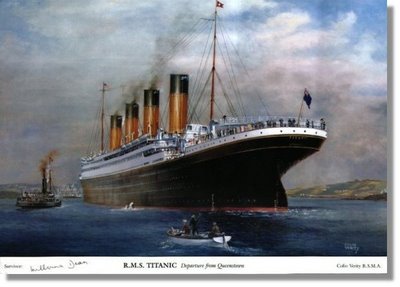 BOSTON (AP) -- Lillian Gertrud Asplund was just 5 years old when she and her family boarded the Titanic in Southampton, England, on their way back to Massachusetts.
BOSTON (AP) -- Lillian Gertrud Asplund was just 5 years old when she and her family boarded the Titanic in Southampton, England, on their way back to Massachusetts.That night in 1912, she lost her father and three brothers - including a fraternal twin - when the "practically unsinkable" ship went down in the Atlantic after hitting an iceberg.
Asplund, 99, the last survivor of the Titanic who remembered its sinking, died Saturday at her home in Shrewsbury, said Ronald E. Johnson, vice president of the Nordgren Memorial Chapel in Worcester, Mass.
************************
Memory and forgetfulness are as life and death to one another. To live is to remember and to remember is to live. To die is to forget and to forget is to die. Everything is so much involved in and is so much a process of its opposite that, as it is almost fair to call death a process of life and life a process of death, so it is to call memory a process of forgetting and forgetting a process of remembering. There is never either absolute memory or absolute forgetfulness, absolute life or absolute death. So with light and darkness, heat and cold, you never get either all the light or all the heat out of anything. So with God and the devil; so with everything. Everything is like a door swinging backwards and forwards. Everything has a little of that from which it is most remote and to which it is most opposed and these antitheses serve to explain one another.
-Samuel Butler
**********************************
Rest in peace, little girl.
1 comment:
99 years is a pretty good run...
Post a Comment